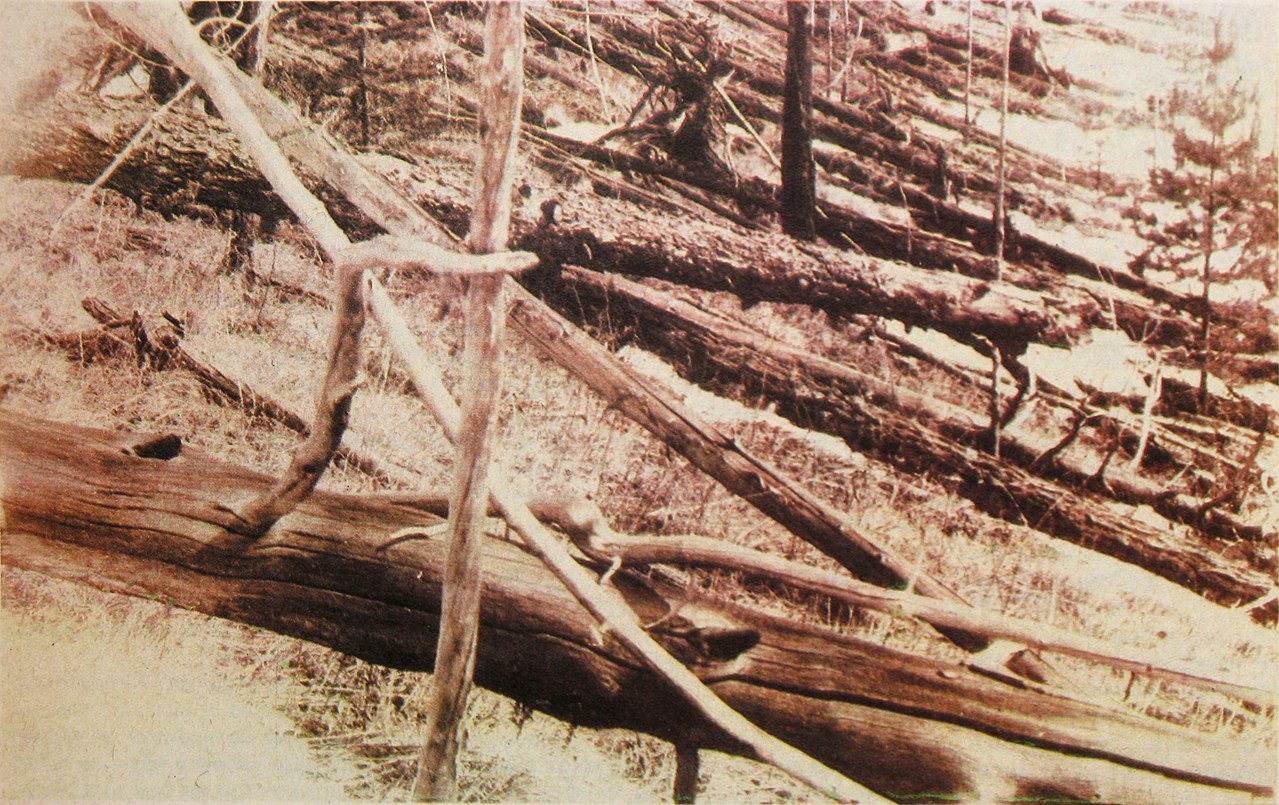At 7:17 am on the morning of June 30, 1908, something exploded over Russia. A celestial body disintegrated over the Podkamennaya Tunguska River in Siberia, with a yield comparable to up to 30 megatons of energy, certainly enough to raze a city. It flattened 2,150 square kilometers (830 square miles) of the Siberian forest. That’s about 80 million trees.
The impact left no crater behind, breaking apart high in the atmosphere – but the shockwave did more than flatten trees. It shook our planet and our atmosphere. The airwaves were registered all the way to Washington D.C. and the seismic station registered the event. Dust and ice were left in the atmosphere, reducing its transparency and even making it glow at night.
What Cause The Tunguska Event?
There are over 100 hypotheses on what might have happened on that summer morning over Siberia, but the leading hypothesis sees a stony asteroid of maybe 50 to 80 meters (160–262 feet) across experiencing a meteor airburst. It exploded 10 to 14 kilometers (6 to 9 miles) in altitude rather than hitting the ground. For this reason, there is no crater, despite claims to the contrary.
A popular hypothesis, for a while, pointed to a cometary fragment being the culprit, as water ice was seen as more easily breakable. But current models, based on the Chelyabinsk bolide that also happened in Russia just a decade ago, favor the breaking of an asteroid over a comet. An asteroid moving at a whopping 55,000 kilometers (34,000 miles) per hour.
A more peculiar hypothesis suggests a glancing blow, with an asteroid skimming the atmosphere and generating the shockwave. It is shown that such a setup is possible, but it has not been demonstrated that it could create a Tunguska event.
Trees knocked out by the event as photographed almost two decades later.
Image Credit: Leonid Kulik, Public Domain Via Wikimedia Commons
What Was The Tunguska Event Like In Person?
The Tunguska area was not visited by scientists for many years. However, there were people there at the time of the event and they had the chance to retell the story of what they experienced at a fortunately safe distance from the site. On the English Wikipedia page of the event, there are several eyewitness accounts.
One in particular by S.Semenov (recorded by Russian mineralogist Leonid Kulik’s expedition in 1930) describes how Semenov was thrown a few meters backward and lost his sense for a moment, his wife came out of the house to lead him back home. He then described the experience of hot wind blowing. Semenov and his wife lived around 60 kilometers (41 miles) from the impact location, and his description is consistent with the shockwave observed by scientists.
It is uncertain if anyone perished in such an event, anyone closer than the Semenovs would have experienced much greater effects, potentially fatal ones.
Source Link: The Tunguska Event - The Largest Impact In Recorded History
